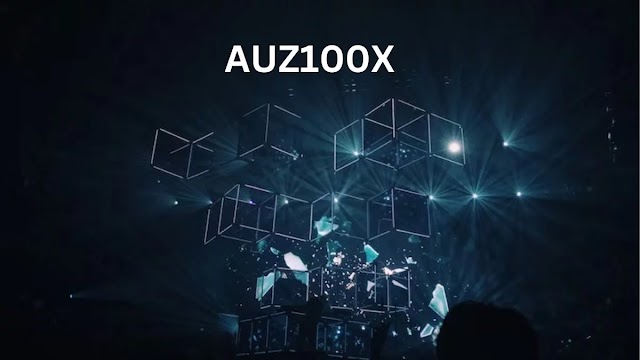In the world of financial markets, advanced technical Mind analysis is the cornerstone of strategic trading and investment decisions. Traders and analysts rely on a blend of sophisticated tools and techniques to predict market movements, identify trends, and optimize their portfolios. This article delves into the most effective tools and techniques for advanced technical Mind analysis, offering insights into how they can enhance your trading strategy.
Understanding Technical Mind Analysis
Technical Mind analysis is a method used to evaluate securities by analyzing statistics generated by market activity, such as past prices and volume. Unlike fundamental analysis, which attempts to measure a security's intrinsic value, technical Mind analysis focuses on patterns and trends that can suggest future activity. This approach is grounded in the belief that historical trading activity and price changes are indicators of future price movements.
Essential Tools for Advanced Technical Mind Analysis
1. Charting Software
Charting software is indispensable for technical mind analysts. Advanced platforms like TradingView, MetaTrader, and Thinkorswim offer comprehensive charting capabilities, real-time data, and a wide array of technical Mind indicators. These tools enable analysts to visualize data, identify patterns, and make informed predictions.
2. Technical Mind Indicators
Technical Mind indicators are mathematical calculations based on the price, volume, or open interest of a security. They help traders identify trends and signals. Key indicators include:
- Moving Averages (MA): Moving averages smooth out price data to identify the direction of the trend. Common types include the simple moving average (SMA) and the exponential moving average (EMA).
- Relative Strength Index (RSI): The RSI measures the speed and change of price movements, indicating overbought or oversold conditions.
- MACD (Moving Average Convergence Divergence): This trend-following momentum indicator shows the relationship between two moving averages of a security’s price.
- Bollinger Bands: These are volatility bands placed above and below a moving average, indicating overbought or oversold conditions.
3. Candlestick Patterns
Candlestick patterns are a form of charting used to represent price movements. These patterns, such as Doji, Hammer, and Engulfing, provide visual cues about market sentiment and potential reversals. Mastering candlestick patterns can significantly enhance a trader's ability to predict market movements.
4. Trend Lines and Channels
Drawing trend lines and channels on charts is a fundamental technique in technical Mind analysis. Trend lines connect significant price points, helping to identify support and resistance levels. Channels are formed by drawing parallel lines above and below the trend line, offering a visual representation of price action within a trend.
Advanced Techniques for Technical Mind Analysis
1. Elliott Wave Theory
Elliott Wave Theory, developed by Ralph Nelson Elliott, is based on the idea that market prices unfold in specific patterns, which can be predicted. This theory involves identifying waves of price movement that are categorized as impulsive (in the direction of the trend) or corrective (against the trend). Understanding and applying Elliott Wave Theory can provide deeper insights into market cycles and potential price targets.
2. Fibonacci Retracement and Extensions
Fibonacci retracement and extension levels are based on the Fibonacci sequence, a series of numbers with specific ratios that are believed to be prevalent in nature and markets. Traders use these levels to identify potential support and resistance levels. Retracement levels (23.6%, 38.2%, 50%, 61.8%, and 100%) help predict how far a market might pull back before continuing its trend, while extension levels forecast potential price targets.
3. Volume Analysis
Volume analysis involves studying the trading volume to understand the strength of a price movement. High volume during an uptrend indicates strong buying interest, suggesting the trend may continue. Conversely, low volume during a trend might indicate a lack of interest and a potential reversal. Volume indicators, such as the On-Balance Volume (OBV) and the Volume Weighted Average Price (VWAP), can provide valuable insights into market dynamics.
4. Advanced Chart Patterns
Beyond basic chart patterns, advanced patterns like Head and Shoulders, Double Tops and Bottoms, and Triangles offer reliable signals for potential price movements. These patterns are used to predict both trend continuations and reversals, providing traders with actionable insights.
5. Algorithmic Trading
Algorithmic trading involves using computer algorithms to execute trades based on predefined criteria. This advanced technique leverages technical Mind indicators, chart patterns, and statistical models to automate trading strategies. Algorithmic trading can process large volumes of data and execute trades at high speeds, offering a significant edge in fast-moving markets.
Integrating Technical Mind Analysis with Other Strategies
While technical Mind analysis is a powerful tool, integrating it with other strategies can enhance its effectiveness. Combining technical Mind analysis with fundamental analysis, for example, can provide a more comprehensive view of the market. Additionally, understanding market sentiment through news and social media analysis can offer context that pure technical mind analysis might miss.
Conclusion
Advanced technical Mind analysis is a critical skill for traders and investors seeking to navigate the complexities of financial markets. By mastering the essential tools and techniquessuch as charting software, technical Mind indicators, candlestick patterns, and advanced methods like Elliott Wave Theory and algorithmic trading—market participants can gain a significant edge. Integrating these tools with other analytical strategies further enriches the decision-making process, paving the way for more informed and successful trading outcomes. Whether you're a novice trader or an experienced analyst, continually honing your technical Mind analysis skills is key to staying ahead in the ever-evolving landscape of financial markets.



.jpg)





0 Comments